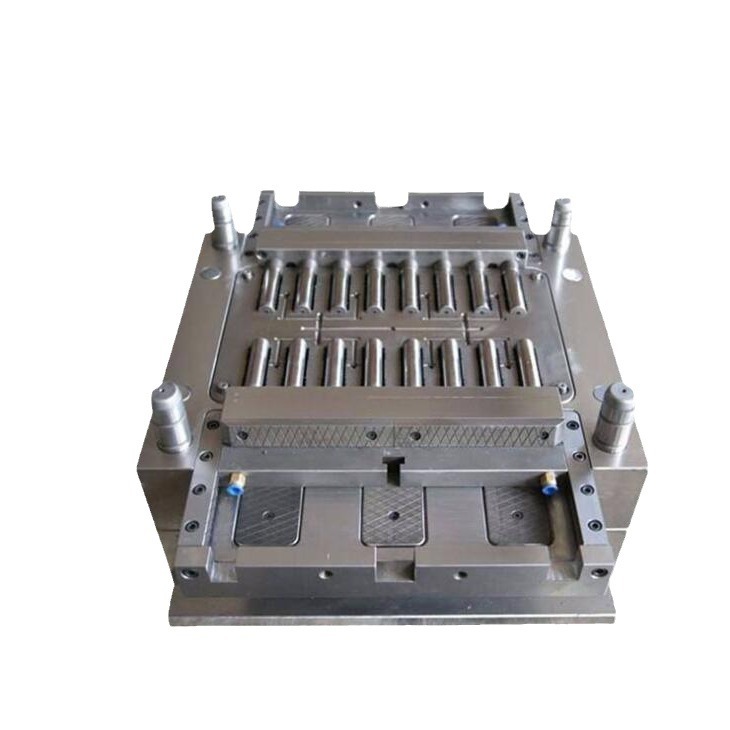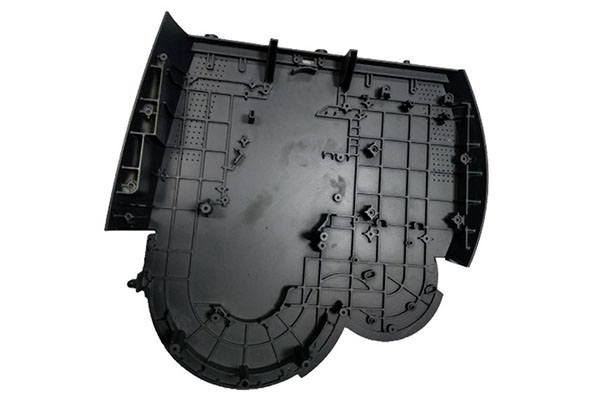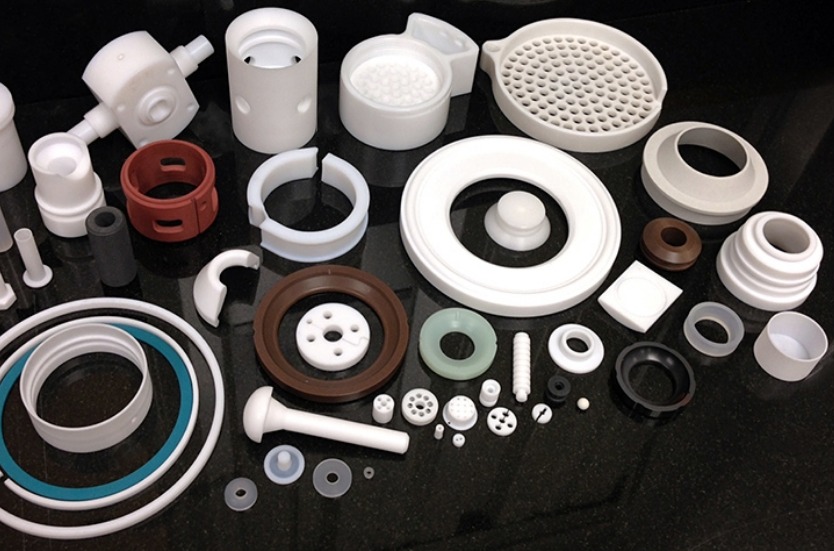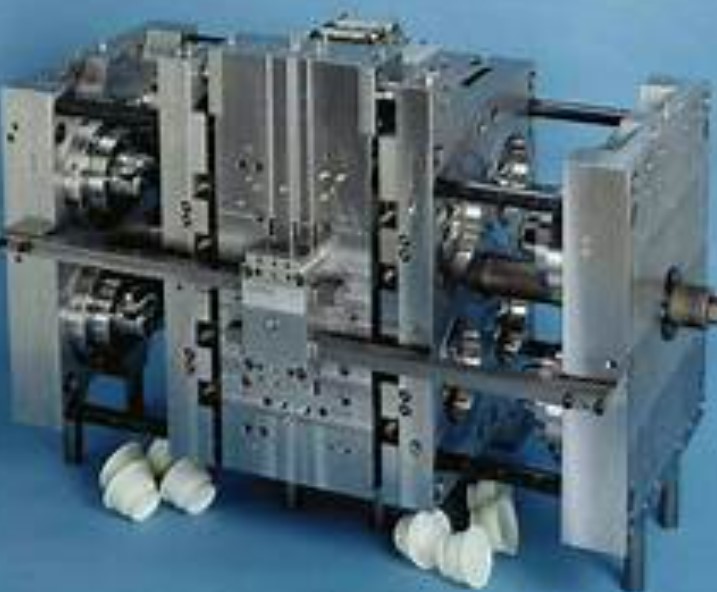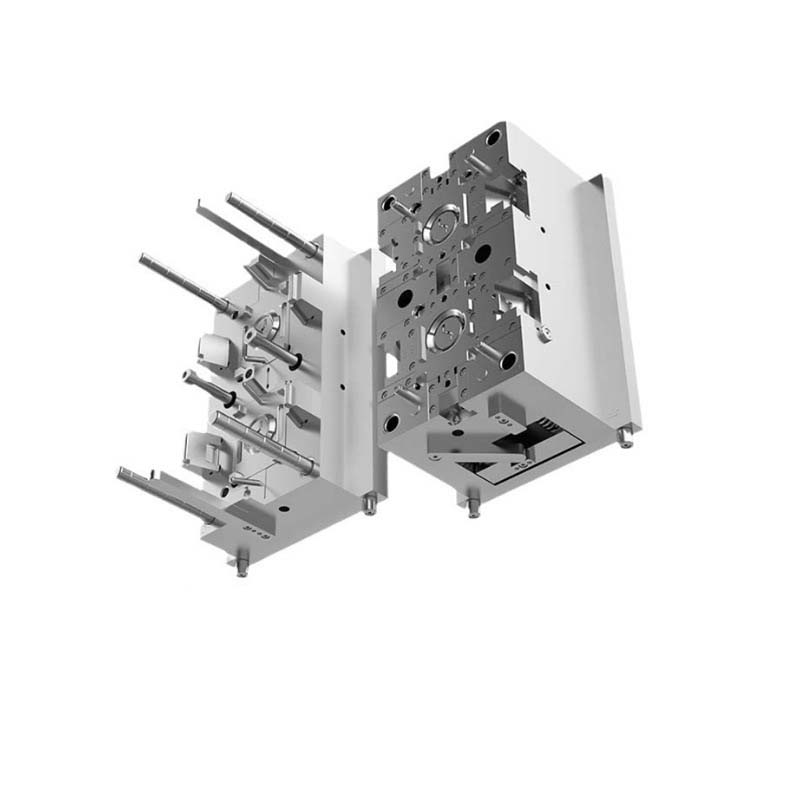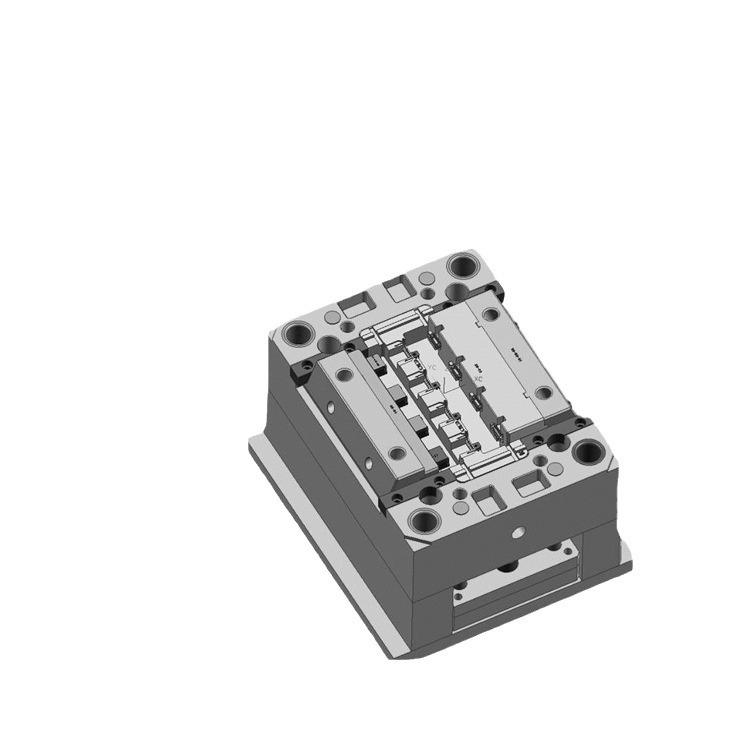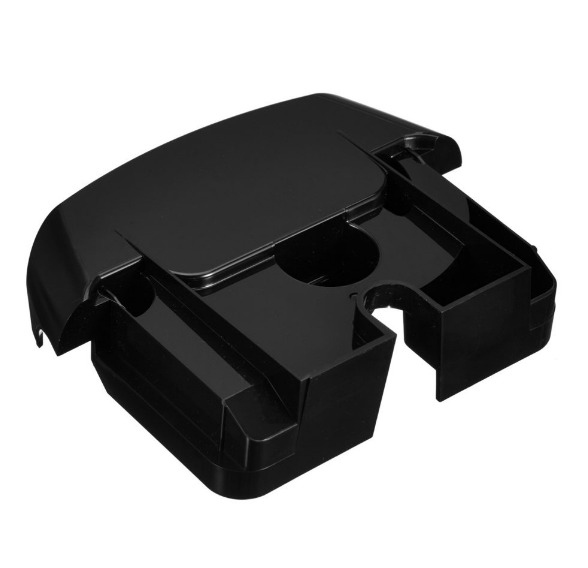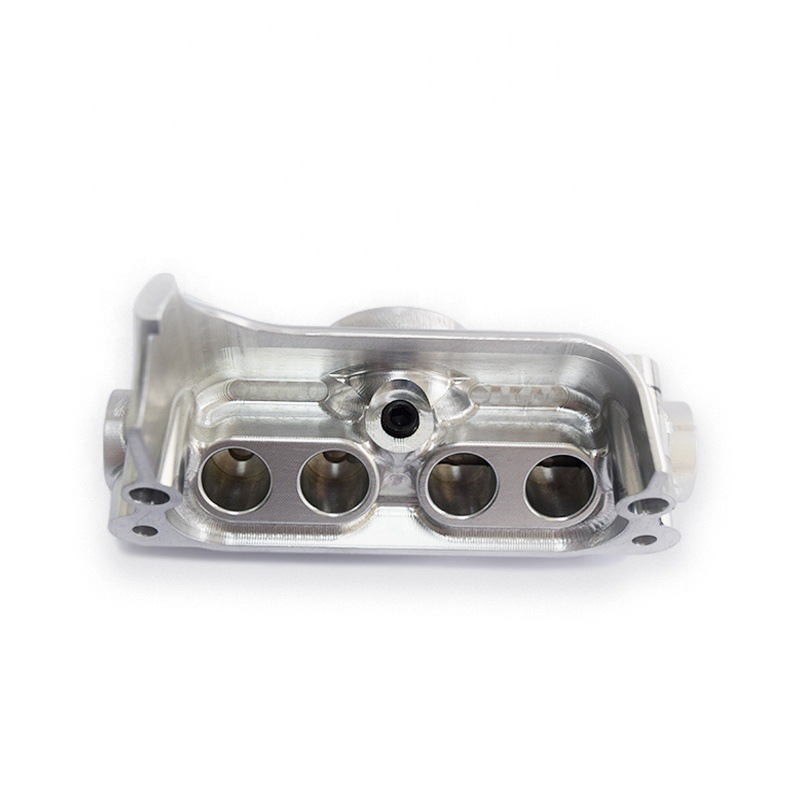Understanding Custom Molds
Definition and Basics
Custom molds, in the manufacturing realm, are specialized tools meticulously crafted to shape raw materials into specific, often unique, products. Unlike standard molds that are mass - produced for general - purpose applications, custom molds are tailored to meet the exacting requirements of a particular product or production run. They can be made from a variety of materials such as steel, aluminum, plastic, or silicone, each with its own set of advantages depending on the nature of the product and the production process.
The basic components of a custom mold typically include the cavity, which is the negative impression of the final product's shape. This is where the raw material is poured or injected. For Yigu Technology example, in plastic injection molding, the molten plastic is forced into the cavity under high pressure. The core is another crucial component, especially in molds for products with internal features. It provides the shape for the inside of the product, such as the hollow center of a plastic bottle. There are also runners and gates. Runners are channels within the mold that direct the flow of the raw material (like molten metal in die - casting or molten plastic in injection molding) from the injection point to the cavity. Gates are the small openings where the material enters the cavity from the runners, controlling the flow rate and distribution of the material.
The working principle of custom molds is centered around the concept of shaping materials through a molding process. For instance, in compression molding, a pre - measured amount of raw material, such as a thermosetting plastic compound, is placed between two halves of a heated mold. As the mold closes, pressure is applied, causing the material to flow and fill the cavity, taking on the shape of the mold. Once the material has cured (in the case of thermosetting plastics) or cooled (for thermoplastics), the mold is opened, and the finished product is ejected. In injection molding, the process is more dynamic. A plastic pellet is melted in a heating barrel and then injected at high speed into the closed mold cavity. The high - pressure injection ensures that the plastic fills even the most intricate details of the mold cavity.
The Process of Custom Mold Making
- Design Conception
- The first step in creating a custom mold is the design phase. This begins with a thorough understanding of the product requirements. Designers work closely with clients to gather all the necessary information, such as the product's dimensions, functionality, aesthetic requirements, and production volume. For Yigu Technology example, if a company wants to produce a custom - designed smartphone case, the design team needs to know the exact dimensions of the phone it will house, any specific features like cut - outs for buttons or cameras, and the desired surface finish, whether it's a glossy or matte look.
- Using computer - aided design (CAD) software, designers create a 3D model of the product. This digital model allows for easy visualization and modification. Multiple design iterations can be made quickly, saving both time and cost compared to traditional design methods. During this stage, factors like draft angles (the slight taper added to the mold walls to facilitate the removal of the finished product), wall thickness, and radii of curvature are carefully considered. For example, a proper draft angle of 1 - 3 degrees is usually added to the side walls of a plastic injection - molded part to ensure it can be easily ejected from the mold without getting stuck.
- Design Validation and Simulation
- Once the initial CAD design is complete, it undergoes a validation process. This often involves running simulations using computer - aided engineering (CAE) software. In injection molding, for example, CAE simulations can predict the flow of the molten plastic within the mold cavity. It can show potential areas of air traps (where air gets trapped and causes defects in the product), weld lines (where two streams of plastic meet and form a visible line), and areas of uneven filling.
- By analyzing these simulations, designers can make adjustments to the mold design. For instance, if the simulation shows an air trap in a particular area, the designer can add vents to the mold in that location to allow the air to escape. These simulations are crucial as they can prevent costly mold re - engineering after the mold has been manufactured.
- Material Selection
- Based on the product requirements, the production volume, and the molding process, the appropriate mold material is selected. If the product is a high - volume production of small plastic parts, steel molds might be a good choice due to their high durability and ability to withstand the high - pressure injection process over a large number of cycles. Steel molds can last for hundreds of thousands of production cycles.
- For low - volume production or for products with complex geometries where flexibility in the mold - making process is important, aluminum molds could be more suitable. Aluminum is lighter, easier to machine, and less expensive than steel, but it has a lower wear resistance. In some cases, for products that require a soft and flexible mold, such as for making silicone - based products, silicone molds are used.
- Mold Manufacturing
- Once the design is finalized and the material is selected, the mold - making process begins. Precision machining is a common method used to create the mold. Computer - numerical - control (CNC) machines are often employed. These machines can accurately cut and shape the mold material according to the 3D design. For Yigu Technology example, a CNC milling machine can be used to mill out the cavity and core of the mold from a block of steel or aluminum.
- Electrical discharge machining (EDM) is another technique, especially useful for creating intricate shapes or for materials that are difficult to machine conventionally. In EDM, an electric spark is used to erode the material away, creating the desired shape. After the main components of the mold are machined, they are often heat - treated to improve their hardness and wear resistance.
- Assembly and Testing
- The individual components of the mold, such as the cavity, core, runners, and gates, are assembled. This requires precise alignment to ensure that the mold functions properly. After assembly, the mold undergoes a series of tests. In a trial run, the mold is installed in the molding machine (such as an injection - molding machine or a compression - molding machine), and a small number of products are produced.
- These trial products are carefully inspected for any defects, such as poor surface finish, incorrect dimensions, or structural weaknesses. If any issues are found, the mold is disassembled, and the necessary adjustments are made. This process of testing and adjustment continues until the mold produces products that meet the quality standards.
- Final Touches and Delivery
- Once the mold passes all the tests, it may undergo some final finishing operations. This can include polishing the mold surfaces to achieve the desired surface finish of the product. For products with a high - gloss finish requirement, the mold surfaces need to be highly polished. After the final touches, the custom mold is delivered to the client, along with any necessary documentation, such as operating instructions and maintenance guidelines.
Precision in Custom Molds
How Precision is Achieved
- 3D Printing Precision
- High - Resolution Modeling: The precision of 3D - printed molds starts with the design phase. CAD software allows designers to create highly detailed 3D models with sub - millimeter accuracy. For Yigu Technology example, in SLA 3D printing, the laser can be focused to a very small spot size, typically in the range of 0.05 - 0.15 mm, enabling the creation of fine details in the mold. The layer thickness during 3D printing also contributes to precision. In high - end SLA printers, layer thicknesses as low as 0.025 mm can be achieved, resulting in a smooth surface finish and accurate replication of the 3D model.
- Material Properties and Consistency: The choice of materials in 3D printing affects precision. High - quality resins and powders used in SLA and SLS 3D printing, respectively, have consistent properties. For example, SLA resins are formulated to have a consistent viscosity and curing behavior. This ensures that each layer cures uniformly, maintaining the accuracy of the mold's shape throughout the printing process. In SLS, the metal or plastic powders are carefully sized and distributed to ensure even sintering, which is crucial for the dimensional accuracy of the printed mold.
- CNC Machining Precision
- Advanced Control Systems: CNC machines are equipped with sophisticated control systems. These systems use feedback mechanisms, such as encoders, to constantly monitor the position of the cutting tool. For example, linear encoders can provide real - time information on the movement of the machine axes with an accuracy of up to 0.0001 inches. The control system adjusts the tool's path based on this feedback, compensating for any deviations and ensuring that the machining process adheres to the programmed design.
- High - Quality Machine Components: The mechanical components of CNC machines also contribute to precision. Spindles in high - end CNC milling machines can rotate with extremely high precision, maintaining a concentricity of less than 0.0005 inches. This is essential for accurate milling operations, as any wobbling of the spindle could lead to inaccuracies in the cut. The guideways on which the machine axes move are also designed for high precision, with low - friction and high - rigidity components that minimize any play or movement during machining.
- EDM Precision
- Controlled Spark Discharge: In EDM, the spark discharge is carefully controlled. The energy, duration, and frequency of the sparks are adjusted based on the material being machined and the desired precision. For example, in sinker EDM, a lower - energy spark discharge can be used when creating fine details in the mold, as this reduces the amount of material removed per spark and allows for more precise shaping. The dielectric fluid used in EDM also plays a role in precision. It helps to cool the workpiece and flush away the eroded material, ensuring a clean and consistent machining process.
- Precision Electrodes: The electrodes used in EDM are made with high precision. In wire EDM, the wire electrode is extremely thin, typically ranging from 0.05 - 0.3 mm in diameter. The wire is guided precisely through the workpiece using diamond - coated guides, which ensures a straight and accurate cut. In sinker EDM, the shaped electrodes are often fabricated using CNC machining or other precision manufacturing techniques to ensure that they accurately transfer the desired shape to the mold workpiece.
Custom Molds vs Standard Molds
A Comparative Analysis
| Aspect | Custom Molds | Standard Molds |
| Cost | Higher initial cost due to custom design, unique materials, and precision manufacturing. However, for high - volume production of complex parts, the unit cost can become competitive as the mold's efficiency in producing the specific part reduces waste and rework. For example, a custom - designed injection - mold for a complex automotive component might cost $50,000 initially, but if 100,000 parts are produced, the unit cost contribution from the mold can be relatively low. | Lower initial cost as they are mass - produced and can be used for a variety of general - purpose applications. For instance, a standard injection - mold for a simple plastic box might cost only $5,000. But for complex or unique products, the need for multiple standard molds or modifications can increase the overall cost significantly. |
| Production Cycle | Longer production cycle. The design, validation, and manufacturing processes are tailored to the specific product, which can take weeks or even months. For example, the entire process of creating a custom die - casting mold for a new aerospace part might take 3 - 4 months from design conception to final delivery. | Shorter production cycle. Since they are pre - made or have a standardized design, they can be quickly procured or modified slightly for less complex applications. A standard plastic injection - mold can often be delivered within a week or two if it is in stock or with minor modifications. |
| Applicability | Highly applicable for products with unique shapes, sizes, functions, or high - precision requirements. They are ideal for industries such as aerospace, medical device manufacturing, and high - end consumer electronics. For example, custom molds are essential for creating the intricate components of a pacemaker or the unique housing of a luxury smartphone. | Suitable for general - purpose products with common shapes and sizes, such as basic plastic containers, simple toys, or standard - sized household items. They are more cost - effective when the product does not require a high degree of customization and can be made using a standard mold with minor adjustments. |
| Product Flexibility | Allows for great flexibility in product design changes. If a client wants to modify the product design during the production run, the custom mold can often be adjusted, although it may involve some additional cost and time. For example, if a company wants to add a new feature to its custom - designed automotive interior part, the mold can be re - engineered to accommodate the change. | Limited flexibility. Modifying a standard mold for a significant design change can be costly and time - consuming, often more so than creating a new custom mold. For example, if a standard - sized plastic cup mold needs to be changed to create a cup with a unique handle design, it may be more practical to create a new custom mold rather than modify the standard one. |
| Volume Suitability | Well - suited for both low - volume and high - volume production. For low - volume production, the ability to create a unique product with high precision justifies the higher initial cost. In high - volume production, the long - term cost - effectiveness and the ability to produce consistent, high - quality parts make custom molds a good choice. For example, a custom mold for a specialized medical implant can be used for low - volume production due to the high - precision requirements and strict regulations, while a custom mold for a high - volume consumer electronics product like a smartphone case can ensure consistent quality over a large number of units. | Best for high - volume production of simple and common products. The low initial cost of standard molds can be spread over a large number of units, making them cost - effective for mass - produced items. For example, standard molds are commonly used for producing millions of plastic cutlery sets each year. |
When to Choose Custom Molds
Based on the above comparison, Yigu Technology custom molds are the better choice in the following situations:
- Unique Product Design: When the product has a distinct shape, size, or functional requirement that cannot be met by standard molds. For example, a company developing a new, ergonomically - designed kitchen utensil with a non - standard grip and complex shape would need a custom mold to accurately reproduce the design.
- High - Precision Requirements: In industries like aerospace and medical, where even the slightest deviation in dimensions can have significant consequences. A custom mold for manufacturing a turbine blade in an aircraft engine must meet extremely tight tolerances to ensure the engine's performance and safety.
- Low - Volume Production with High - Value Products: For products that are expensive to produce or have a high - end market, such as luxury jewelry or high - performance sports equipment. The higher cost of custom molds can be justified by the value of each product.
- Product Differentiation: If a company wants to stand out in the market by offering a unique product, custom molds enable the creation of exclusive designs that competitors cannot easily replicate. For example, a cosmetic company might use a custom mold to create a uniquely shaped lipstick tube to attract consumers.
Conclusion
Yigu Technology Custom molds play a vital role in modern manufacturing. They are the key to creating unique, high - precision products that meet the diverse needs of various industries. The process of custom mold making, from design conception to final delivery, is a complex and meticulous one. It involves advanced technologies such as 3D printing, CNC machining, and EDM, all of which contribute to the high - precision results that custom molds are known for.
When compared to standard molds, custom molds offer several advantages, especially in terms of product design flexibility, precision, and the ability to meet specific requirements. They are more suitable for products with unique shapes, high - precision needs, and for both low - volume and high - volume production of high - value items. In industries like aerospace, medical, and high - end consumer electronics, custom molds are essential for maintaining product quality and competitiveness.
The applications of custom molds span across multiple industries, from automotive and aerospace to consumer goods and medical devices. In each of these industries, custom molds enable the production of components and products that are crucial for the functionality, performance, and innovation of the end - products. Looking ahead, the future of custom molds is likely to be shaped by emerging technologies such as AI - driven design optimization and advanced materials, which will further enhance their precision, efficiency, and cost - effectiveness.
FAQ
- Q: What is the typical cost difference between a custom mold and a standard mold?
- A: Custom molds generally have a higher initial cost. While a standard mold for a simple product might cost a few thousand dollars, a custom mold, especially for a complex and high - precision application, can cost tens of thousands or even more. However, for high - volume production of complex parts, the unit cost of using a custom mold can become competitive over time due to its efficiency in producing the specific part accurately, reducing waste and rework.
- Q: How long does it usually take to produce a custom mold?
- A: The production time for a custom mold can vary significantly. On average, from the initial design phase to final delivery, it can take anywhere from a few weeks to several months. Simple custom molds with less complex designs may be completed in 2 - 4 weeks, while more intricate molds for applications like aerospace components can take 3 - 6 months or longer, depending on factors such as design complexity, material selection, and the manufacturing processes involved.
- Q: Can custom molds be modified after production?
- A: Yes, custom molds can often be modified after production, although it may involve additional cost and time. Minor modifications, such as small changes to the surface finish or the addition of small features, can sometimes be relatively straightforward. However, major design changes may require significant re - engineering of the mold, which can be more complex and costly. It's important to communicate any potential design changes as early as possible in the production process to minimize these issues.
